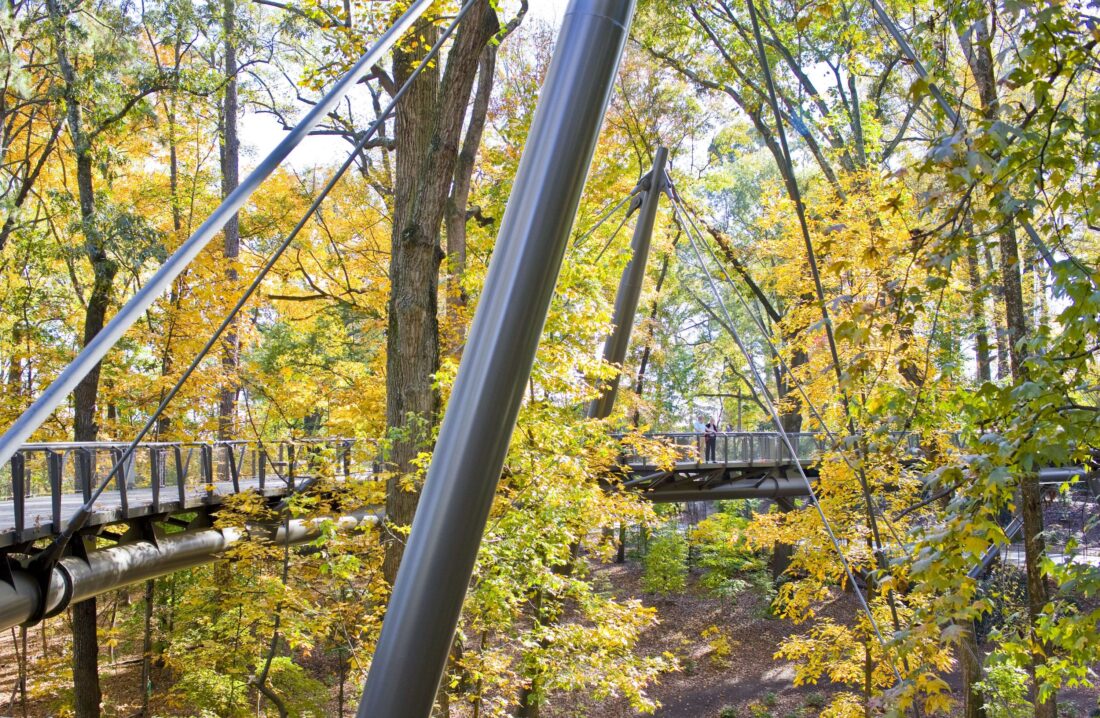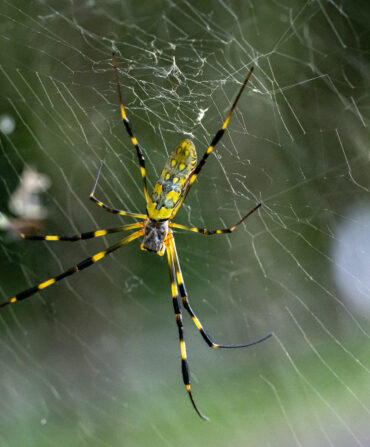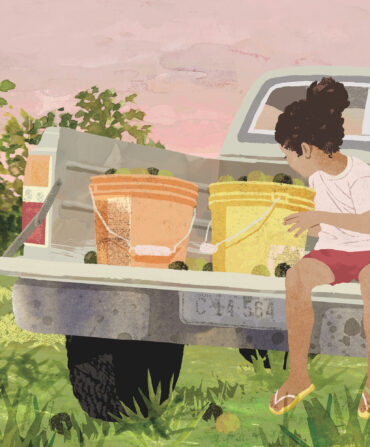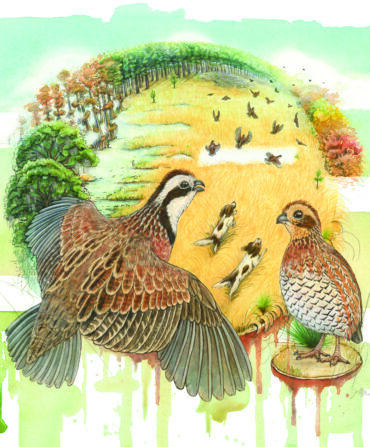Can’t make it up to Maine in the coming weeks? No problem. “A lot of people conjure up those iconic pictures of fall in New England, but the South can have some pretty stunning moments,” says Amanda Bennett, vice president of horticulture and collections at the Atlanta Botanical Garden.
You just might have to wait a bit longer for them. When temperatures are consistently cool, light-absorbing chlorophyll in leaves begins to break down, revealing gorgeous yellows and oranges previously hidden by the dominating green. Depending on the type of tree and where you live in the South, it might be Thanksgiving before you see those hues. But to Bennett, waiting just builds the anticipation. “To me, one of the most beautiful things about gardening and about nature is taking the time to appreciate those brief and fleeting moments,” she says.
Whether you’re making a pilgrimage to the mountains or relaxing in your own yard, here are a handful of native species to appreciate.
White Oak
Quercus alba

Oaks are among Bennett’s favorite natives for fall foliage, and white oaks in particular turn a rich red. The species is also an important wildlife habitat, harboring bats, owls, and caterpillars—among other creatures—in its sturdy branches. This large tree prefers to grow in sun but can survive in partial shade and is fairly drought tolerant once established. “You really can’t go wrong with an oak,” Bennett says.
Pawpaw
Asimina triloba
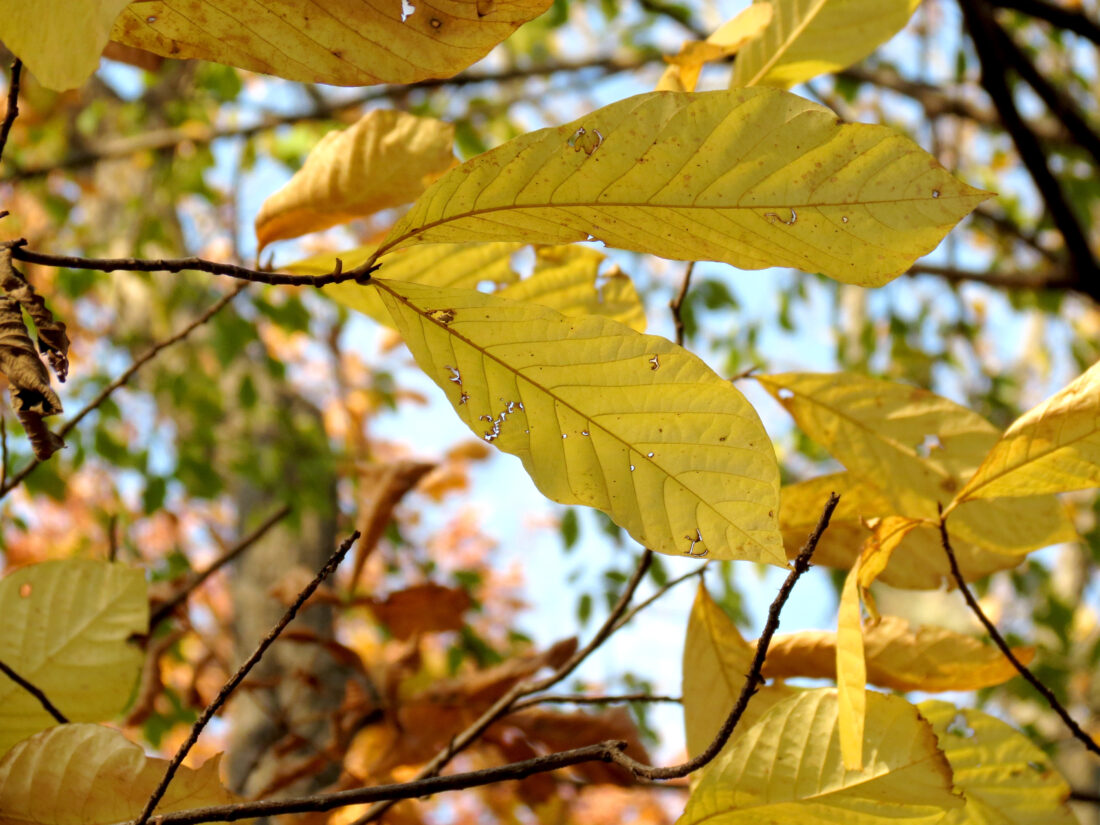
The pawpaw is the Renaissance tree of the Southern forest. From producing North America’s largest edible fruit to having deer-resistant branches, the pawpaw has plenty to recommend it—and then autumn hits and its leaves turn a breathtaking gold. Once mature, this short tree grows best in a sunny spot with well draining soil.
Black Tupelo
Nyssa sylvatica
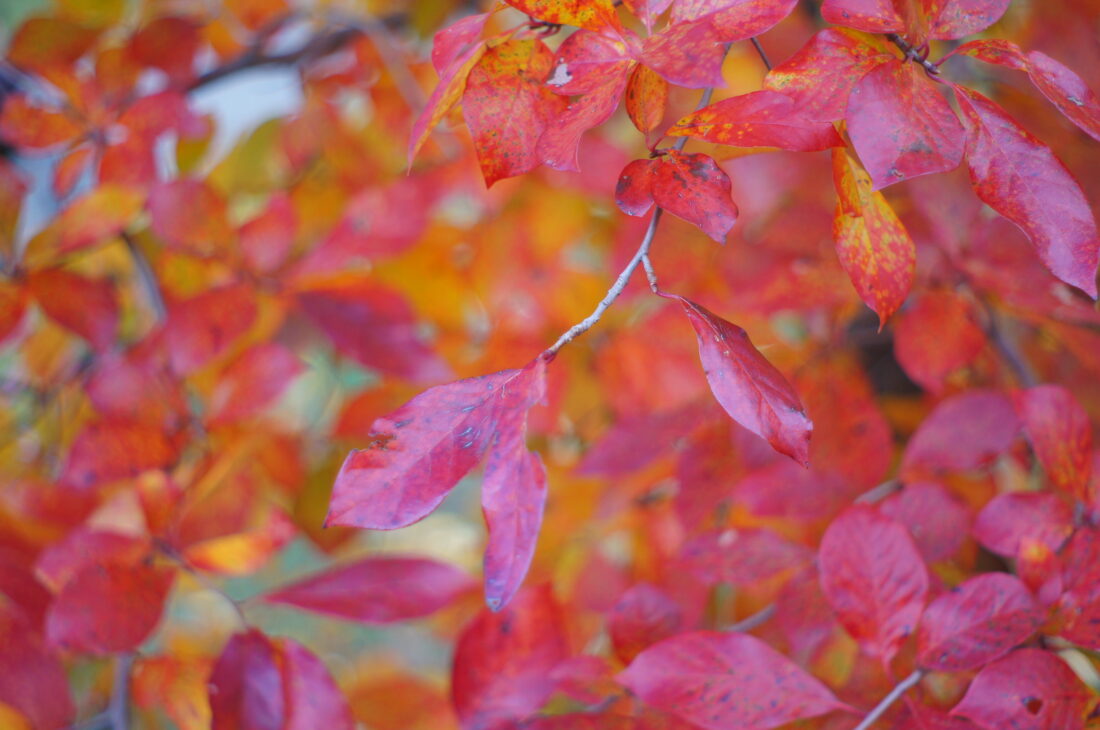
A tree by many names, the blackgum, sour gum, or black tupelo tree “turns a flaming brilliant red color,” Bennett says. It grows well in urban and rural settings and tolerates a bit of shade, though it prefers well-draining soil. Other types of tupelo, including the swamp tupelo, are better suited for wet areas—and they all turn showy colors in the fall.
Red Maple
Acer rubrum

Perhaps the most iconic of the Southern stunners in autumn, the red maple tends to kick off the show by turning a bright crimson early in the season. These fast growers are a great option for most backyards, as they can grow in a variety of soils. This includes wet environments, earning them the nickname “swamp maple” in certain parts of the South.
Mockernut Hickory
Carya tomentosa
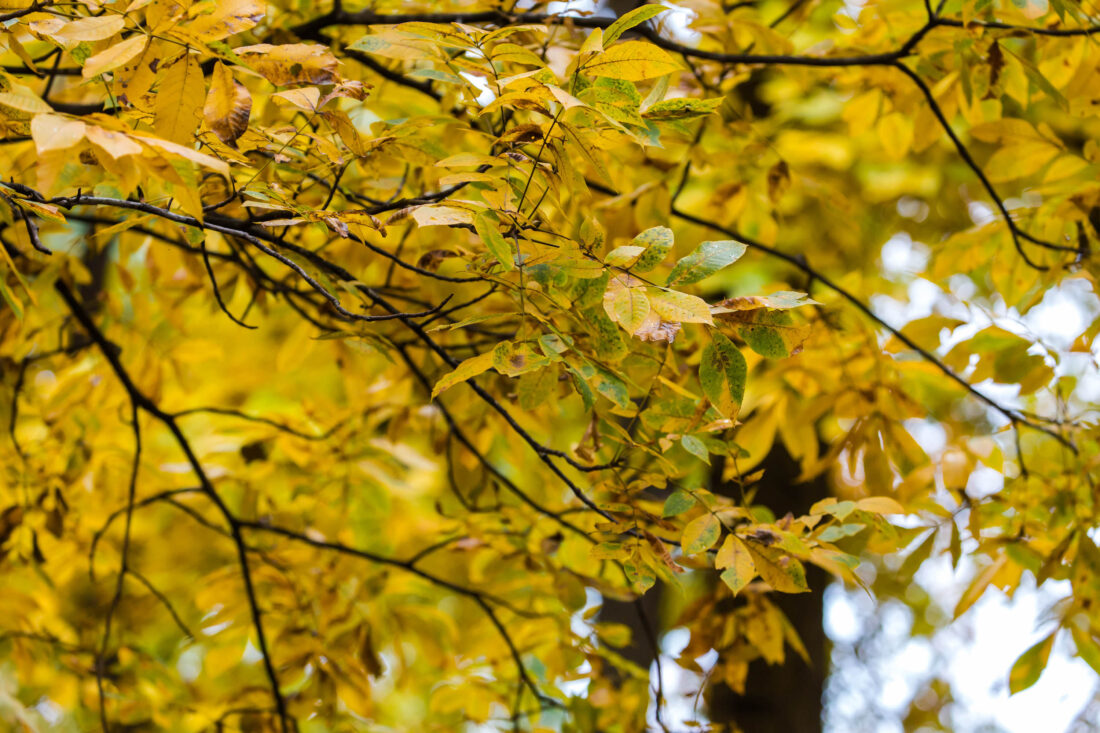
When travelers leaf-peep up north, it’s often the hickories that draw the most attention. But many hickory species, including the mockernut, are also native to the South, and they have the same astonishing color here. Mockernuts are abundant in the region’s forests, though they might be harder to find at garden centers than oaks, Bennett notes. Their yellow leaves make them a great native alternative to ginkgos.
Sourwood
Oxydendrum arboreum
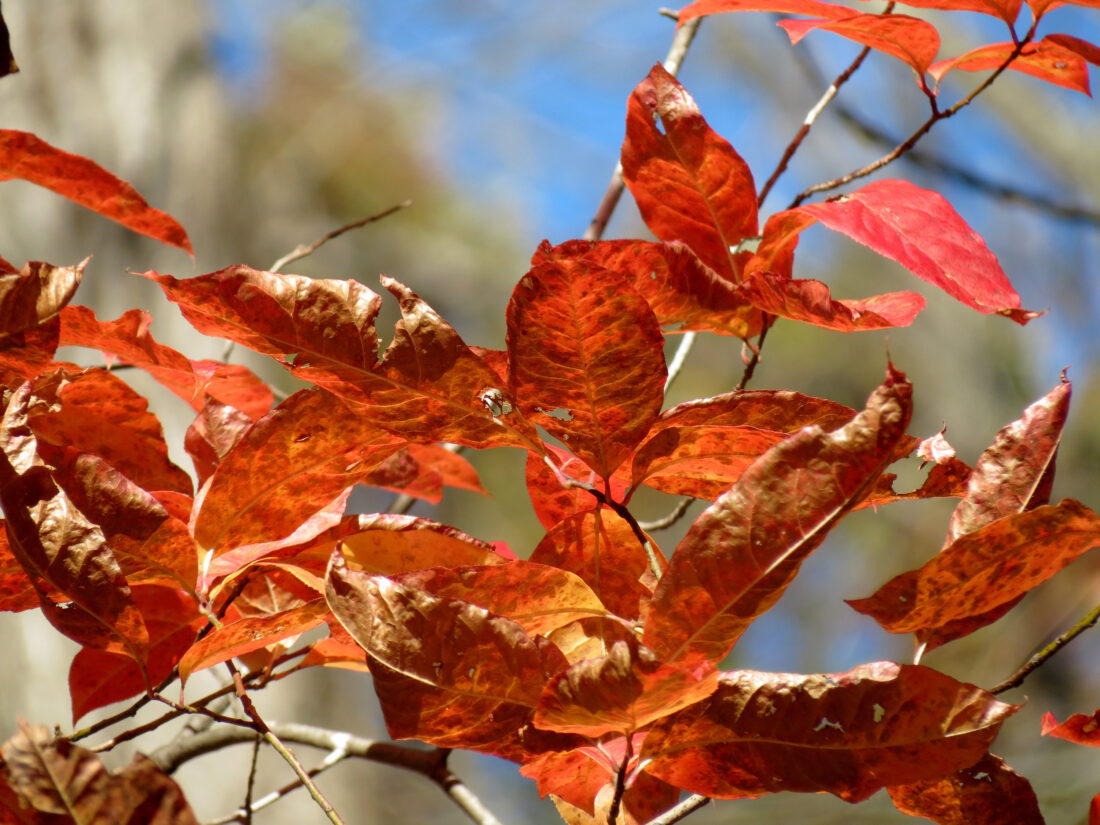
“People don’t realize this is what they ooh and ahh at,” Bennett says, referring to the captivating shade of purply-red the sourwood turns in autumn. This relatively small understory tree also attracts pollinators with its fragrant, bell-shaped flowers in spring before transitioning to its showy fall color. A word of caution: Although its small size is great for those with less space, the sourwood fares better in rural areas and doesn’t tolerate urban pollution well.
Bald Cypress
Taxodium distichum
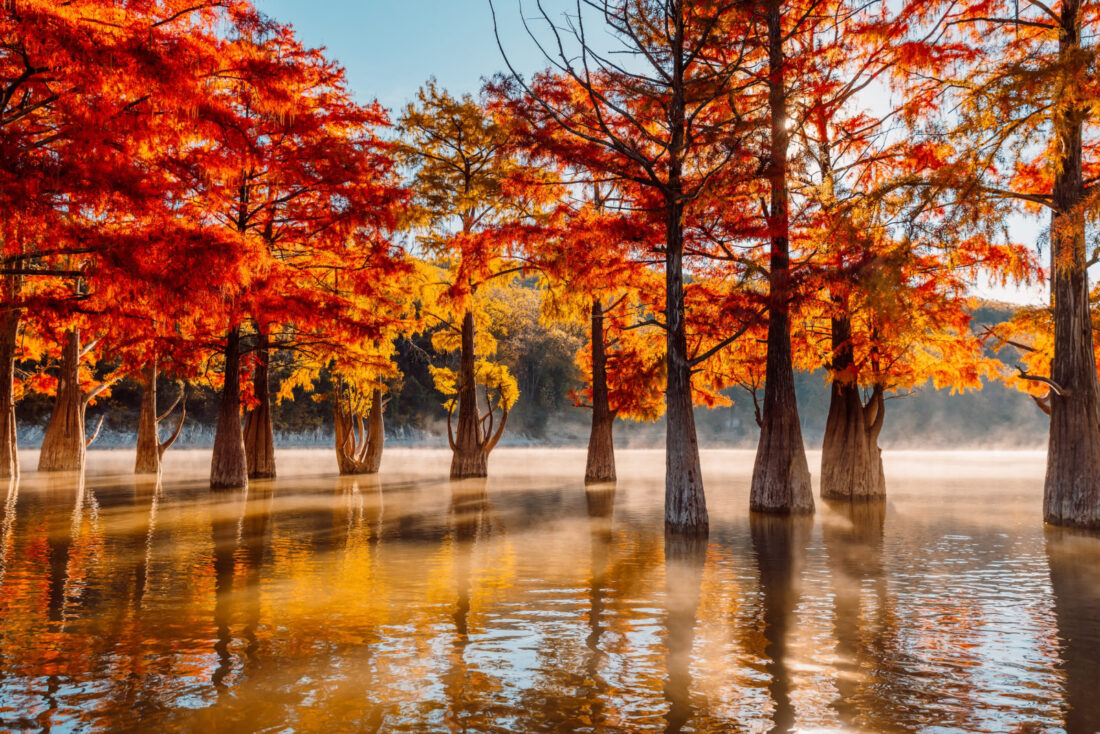
Some yards are swampier than others, and “if you have a challenging drainage situation in a part of your yard, a bald cypress is actually an excellent tree for that area,” Bennett says. Above their knobby knees jutting out of puddles, bald cypresses turn a blazing orange in the fall, while under the surface, their firm roots can help prevent your yard from eroding and suffering additional flooding.
Bonus: Shrubs
Hydrangea quercifolia, Fothergilla gardenii, Viburnum nudum
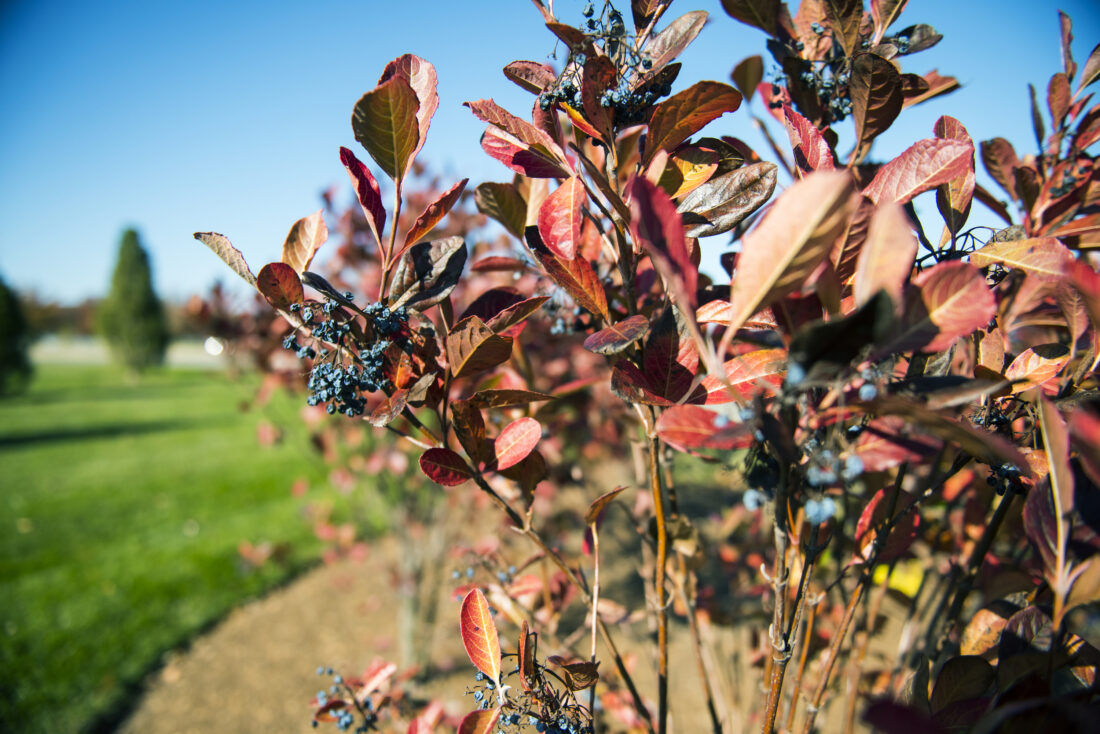
Shrubs are one of Bennett’s favorite hacks to maximize fall color with limited outdoor space. Native varieties like oak leaf hydrangeas, dwarf fothergilla, and possumhaw viburnum shed their puffy white flowers for vibrant leaves in autumn.


